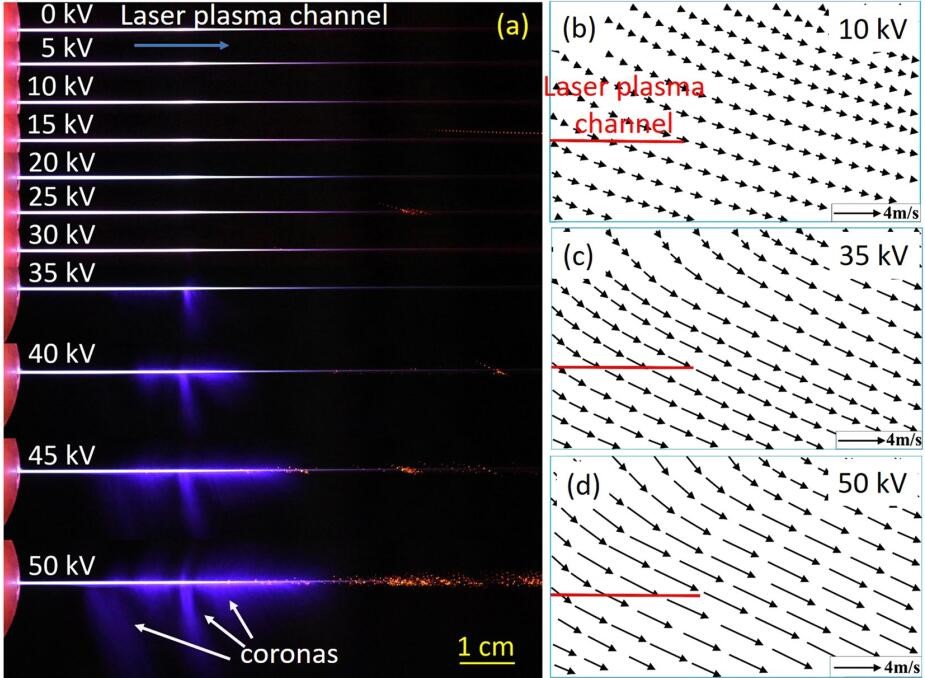Ionic wind, also known as corona wind or electric wind, is an air flow containing both rich ionized and neutral particles. It is generally driven by the electric field from a high voltage applied mechanical electrode system before electrical breakdown. This phenomenon has found a variety of practical applications, such as actuators for aerodynamic applications in space, cooling devices for LEDs and electronics, mobility spectrum of ions for gas diagnostics, precipitations and condensations in weather modification. However, traditional ionic wind generators strictly rely on the configuration design of electrodes, which are mostly limited in different kinds of restricted space or fixed location.
Recently, in collaboration with scientists from Laval University in Canada, researchers from State Key Laboratory of High Field Laser Physics, Shanghai Institute of Optics and Fine Mechanics of the Chinese Academy of Sciences have proposed a novel method to optically generate ionic wind at a distance.
In this work, intense femtosecond (1fs=10-15s) laser pulses were shot in air to form a plasma channel, named as filament, in which the electron density is around 10^15-17 cm^-3. By efficiently coupling a large electric field (from a specially designed electrode) with the laser-induced plasma channel, electrons are highly accelerated in the channel, resulting in strong collision ionization. Consequently, coronas are generated along the laser plasma channel which is responsible for ionic wind observed. The measured ionic wind velocity could be as strong as >4 m/s. This method is robust and immune to the specific design of traditional ionic wind generator and opens a way to optically generate ionic wind at a distance, even remotely.
The results are now published in Scientific Reports with the title of "Laser guided ionic wind" on September 10, 2018.
The study was supported by the Strategic Priority Research Program of the Chinese Academy of Sciences and Key Project from Bureau of International Cooperation of Chinese Academy of Sciences.

Real-color images of coronas generated along the laser plasma channel (a) and (b–d) flow fields of the ionic wind at the voltages of under different voltages (Image by SIOM).